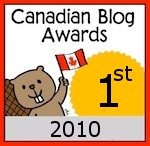North Americans have a curious selective amnesia about the Caracazo of 1989, which began at 5 a.m. local time on this day 25 years ago. But the people of Venezuela, where it happened, haven’t forgotten:
The cruelest page in contemporary Venezuelan history was written by the government of Carlos Andrés Pérez on February 28, 1989, a day in which the indignant people took to the streets of Caracas to show their frustration with the neoliberal politics imposed by the IMF.
Pérez, who sought to liberate the economy of the land, which was already in trouble due to economic spirals which caused the devaluation of the national currency in 1983, set in motion a “package of economic measures” which comprised decisions over exchange policies, external debt, the financial system, fiscal policy, public services, and social policy.
This “parcel of penuries”, as it was popularly known, caused the fragmentation of the Venezuelan welfare state, CAP’s key electoral promise.
After announcing the “parcel”, on February 16 of that year, popular discontent grew, since the people had already lived through an odyssey for survival, while poverty and misery propagated like a virus throughout the land.
The reactions of the 27th of February, 1989, began on the buses of Trapichito, when the passengers found themselves faced with the speculation of the transport companies, who raised their prices by 300%, not 30% as ordered by the Pérez government. Reaction exploded there, in the Guarenas-Guatire terminal. Later the wave of protest expanded to Caracas and the inevitable followed: looting and riots in the land, in reaction to the “parcel of penuries”.
Faced with popular outrage, the Pérez government decided to suspend constitutional guarantees for ten days, and ordered the armed forces to repress the people. General Henry Rangel Silva, currently governor of the state of Trujillo, recalled that day as the one on which “the nation’s armed forces were obliged to take up arms against the people”.
As dusk fell on Tuesday, February 28, the cruelest curfew in Venezuelan history began. The “Caracazo” left an undetermined number of deaths, although official government figures put the number at barely 277 deceased.
With the arrival of Hugo Chávez Frias as president of the republic, who had a strong awareness of the miseries suffered by the people during the 40 years of “representative” democracy, there began a serious and detailed investigation of the events of the Caracazo, headed by the Attorney General of the Republic, Luisa Ortega Díaz.
In 2011, Ortega Díaz informed that 71 victims of the Caracazo had been buried in a common grave in La Peste, in Caracas, and the compensation of the victims’ families began.
Ortega Díaz also catalogued February 27, 1989 as the date on which the second largest genocide in the land began. The investigations of this hard page of contemporary Venezuelan history continue to this day.
Comandante Chávez considered the Caracazo as the seed that would germinate on February 4, 1992, when he led a military insurrection heralding the birth of a new country.
25 years after the events of the Caracazo, the protagonists of Puntofijismo, now installed in the lines of the opposition, and supported by the economic powers, are seeking once more to destabilize the economy of the land with hoarding, speculation, boycotts, and violent demonstrations.
However, today the Venezuelan economy is much stronger. the social politics set in motion by Comandante Chávez and continued by President Nicolás Maduro have significantly improved the quality of life among the people. Good nutrition, culture, education, health, work and sports are the backbone that sustains the Bolivarian Revolution.
Translation mine.
So now we see where that amnesia comes from, don’t we? And wouldn’t you know, it’s from the same massive blind spot in the gringo psyche that refuses to acknowledge just how disastrous “free market” capitalism really is. And how important Chavecito and 21st-century socialism have been in unravelling that Gordian knot of socioeconomic disasters.
The good work that Chavecito began continues now under his successors, and that’s why we’re seeing these temper tantrums on the part of the “opposition”. 25 years ago, those same people were not the opposition, but the government — or, more broadly, the traditional ruling class that had always taken its own undisputed supremacy for granted, and monopolized the economy accordingly. The Caracazo was a harsh wake-up call to them, the poor majority’s way of saying that things had gone too far, and it was now time to change direction…or else.
Clearly they haven’t learned their lesson yet; they seriously think they can get the country back under their thumbs by holding their breath and letting the economy turn blue. There’s just one problem with that little theory: Every single time it’s been tried since 1999, when Chavecito was elected (and ten years after the Caracazo), it’s been an epic failure. The people always came together, and always came together behind the man that the oligarchy pointed the finger at. He was the one who saw what needed to be done…and that meant circumventing the old economy by setting up a parallel, state-run one that sold all the necessities at fair prices, so that the people would no longer have to put up with the same hoarding, speculation and price gouging that caused such outrage in the lead-up to the Caracazo. In other words: not a free market, but a kind of freedom FROM the market. And by logical extension, a freedom from control by the traditional, rotten ruling classes.
The same ruling classes, of course, that are in such a tizzy today.
PS: Don’t miss this great docu-drama by Roman Chalbaud, now with English subtitles:
Powerful and moving. Well worth the time to see.




One of the tactics of the opposition has been to vandalize Metro stations, destroy buses and attack transit workers. At least 50 buses are either totally destroyed or disabled (some by gunshots) and several Metro stations have been closed intermittently since the “peaceful” demonstrations began. The Caracas Metro normally serves more than two million people daily. But never mind–these kids can just use Daddy’s Mercedes if the Metro is shut down. See them peacefully demonstrate at
http://www.aporrea.org/oposicion/n245262.html
Ah yes. It really is the inverse of what happened 25 years ago, eh? People who don’t depend on the buses for transportation to and from work (or for their own livelihood), trashing them to punish people who do. At least, during the Caracazo, it was the poor trashing the buses because of an unsustainable fare hike that their own miserable wages couldn’t cover. And the bus companies really were run by greedy shits in those days.
I’ve also noticed that the escualidos are trashing the Mercal supermarkets, or the trucks supplying them. There’s another irony…these same “middle-class” snotballs trashing the Chavista stores are the ones whose shopkeeping parents hoarded food and other essential supplies back in 1989. Plus ça change…
Here is another outrageous example of opposition violence, unimpeded by the police who are controlled by an opposition mayor in San Cristoba, Tachira.
http://www.aporrea.org/oposicion/n246111.html